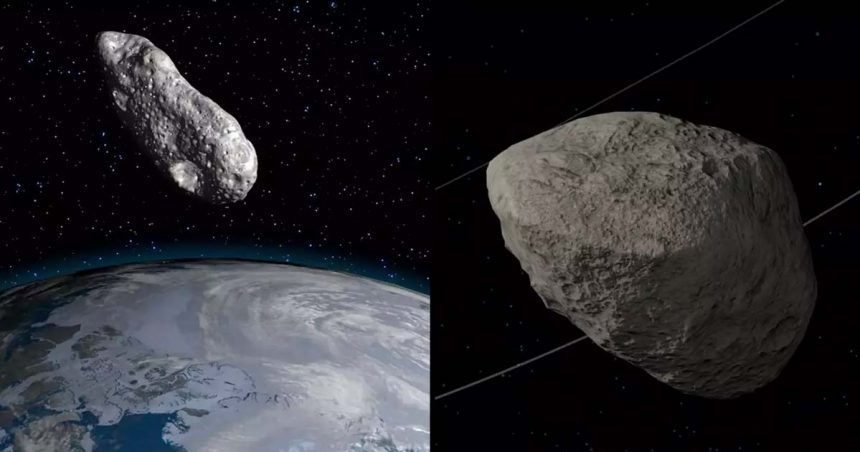The asteroid Apophis, known as the “God of Chaos,” has garnered attention for its potential threat to Earth. NASA now offers a live feed to track its movements, raising both reassurance and concern. With the capability to unleash an impact force equivalent to 1,000 megatons of dynamite, could this massive space rock collide with our planet in the future? Here’s what we currently understand.1
What Is Apophis?

Named after the Egyptian god of chaos and destruction, Apophis is a 340-meter-wide asteroid discovered in 2004. It gained notoriety for being one of the most hazardous asteroids due to its close proximity to Earth. On April 13, 2029, Apophis will pass by Earth at a distance of 19,000 miles, potentially visible to the naked eye. This event has sparked both excitement and apprehension, especially regarding the possibility of a trajectory alteration.
Read More: 13 Astonishing Images Taken By Voyager 1 On Its Way to Interstellar Space
Tracking Apophis’ Trajectory

NASA has taken extensive measures to track Apophis’ trajectory, including providing a live feed for real-time monitoring. Initial research suggested a safe pass in 2029, but a recent study indicates that even a small collision with another space object could alter its course.2 Canadian astronomer Paul Wiegert has raised concerns about a potential deflection from a smaller asteroid leading to a collision with Earth. While the odds are extremely low, around 1 in 2 billion, ongoing observation is crucial.
What Could Cause a Collision?

While Apophis is not currently on a collision path with Earth, even an encounter with a small object as tiny as 0.6 meters could change its trajectory. Wiegert states that the chances of an unseen asteroid deflecting Apophis towards Earth are approximately 10^-8, with the asteroid being unobservable until 2027, keeping scientists vigilant.
The Impact of a Collision

If Apophis were to collide with Earth, the results would be catastrophic, releasing over 1,000 megatons of TNT energy, capable of devastating a large area. While not on par with the dinosaur-extinction asteroid, a direct hit on a populated region could lead to millions of casualties. Luckily, NASA’s radar observations assure no risk of an impact for the next century, but continued vigilance is essential due to the uncertainties of space.
Read More: The Mystery of The Indian Ocean’s ‘Gravity Hole’
Future Measures and Planetary Defense

If Apophis’ trajectory poses a threat, NASA has devised plans to avert a collision. The successful test of the Double Asteroid Redirection Test (DART) showcases a method to alter an asteroid’s motion, potentially used for Apophis if necessary. From nuclear devices to surface alterations affecting solar absorption, various interventions could be employed to safeguard Earth.
A Close Encounter

Despite its menacing name, Apophis is unlikely to cause harm in 2029. However, this close approach presents a valuable opportunity for scientific study on potentially hazardous asteroids. With NASA’s tools and ongoing research, we can closely monitor Apophis for any unforeseen changes in its path and enhance our preparedness for such celestial events.
Read More: Scientist Witness Great White Shark Eating a Rival Shark For The First Time
Sources
- “NASA has live feed of ‘God of Chaos’ asteroid that experts warn could hit Earth very soon.” Lad Bible. Joshua Nair. September 6, 2024.
- “Collisions could increase chance of ‘God of Destruction’ asteroid Apophis hitting Earth.” Space. Robert Lea. September 2024.
- “On the Sensitivity of Apophis’s 2029 Earth Approach to Small Asteroid Impacts.” IOP Science. Paul Wiegert. August 26, 2024.






